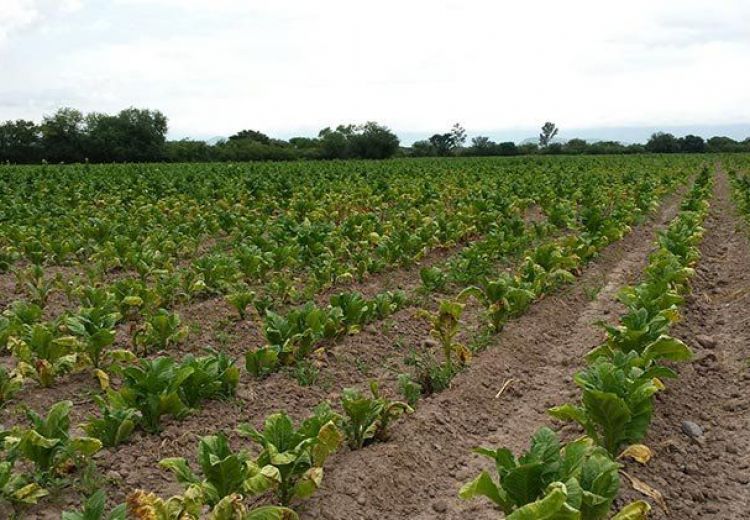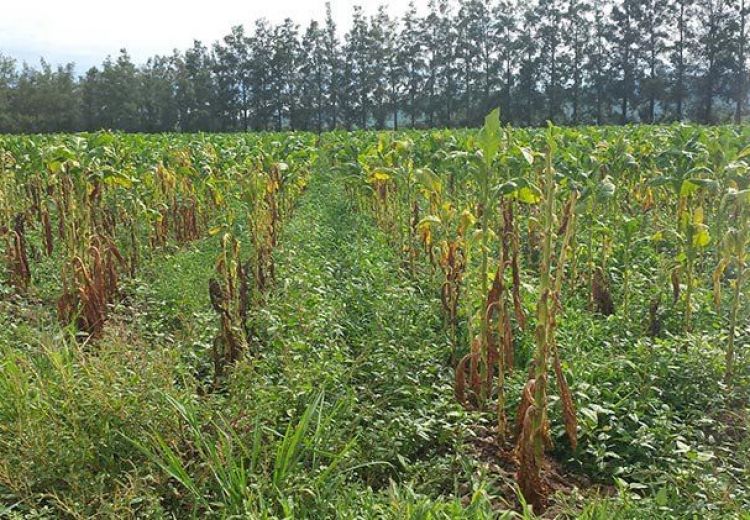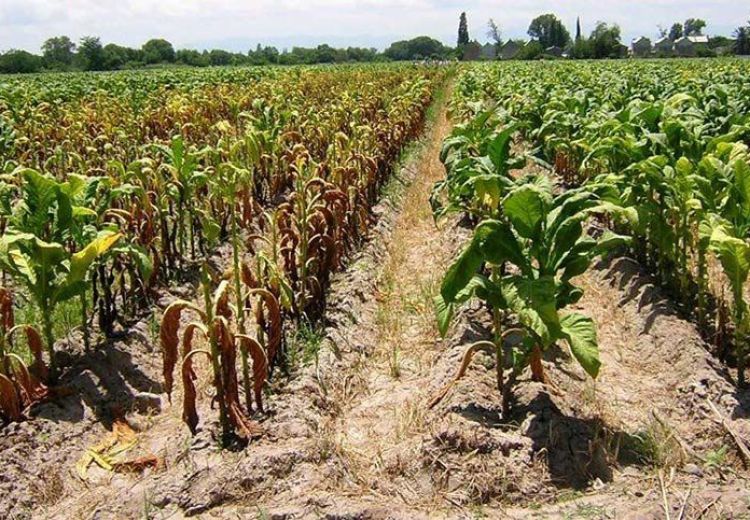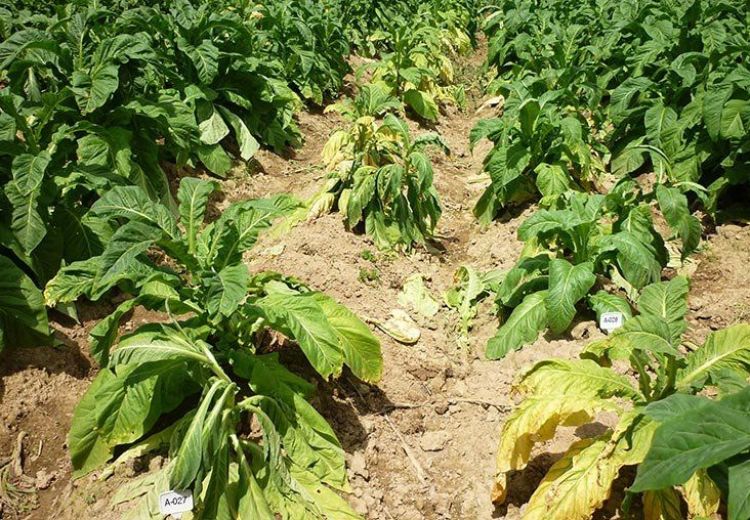Diseases and Pests
Yellow Stunt
The initial symptom of the disease appears when the aerial part of the plant begins to wilt, followed by a yellowing process and later, by necrotic tissue, causing the plant to die.
Yellow stunt or “yellow disease complex” is caused by a series of factors, however, it seems to be triggered by excessive moisture levels at the root zone, resulting into a lack of aeration for the roots. Tobacco has low tolerance to O2 deficit and to the excess of CO2, and the combination of excessive moisture, lack of oxygen and high temperatures could cause the root system to collapse.
The consequences vary according to the development stage, environmental conditions, duration and the percentage of affected roots. The impact could be low or could even kill the plants by root asphyxiation.
Tobacco plants react to root asphyxiation, as far as possible, through the emergence of new roots above the saturation line, gradually restoring the nutrient supply to the aerial part of the plant. The generation of new roots is stimulated by a process that blockades the translocation of photosynthetic products, giving rise to the yellowish color of the plants.
Within this context, the collapse of the tobacco roots favors the penetration or alters the susceptibility of the plant towards the invasion of pathogens associated with yellow stunt.
In laboratory examinations infected plants frequently include the presence of several pathogens, like Ralstonia solanacearum, Fusarium oxysporum, Rhizoctonia solani, Phytium spp. and Phytophtora parasitica.
Some management practices could weaken the damages caused by yellow stunt:
- Destruction of infected crop remains right after harvest
- Sub-soiling for the elimination of compacted layers (compaction)
- Seeding green cover crops to improve soil structure
- Reduce the number of cultivations that damage the root system
- Crop rotation
- Implement high ridging systems, planting on top of the ridge
- Contour farming with an appropriate difference in level to facilitate drainage
- Irrigation water management, avoiding the application of excessive amounts that result into saturated soil
- Utilization of varieties with higher tolerance
Symptom disease pictures:
See also
-
Diseases and Pests
- Cucumber Mosaic Virus - CMV
- Nematodes
- Potato Virus Y - PVY
- Yellow Stunt
- Diseases and Pests
- Bacterial Wilt
- Tobacco Mosaic Virus - TMV
- Curly top - BCTV
- Tomato Spotted Wilt Virus - TSWV
- Black Shank
Related products
-
PVH2291
Yellow Stunt - Tolerant
-
PVH2329
Yellow Stunt - Tolerant
-
HB4180P
Fusarium and Bacterial Wilt - Tolerant




